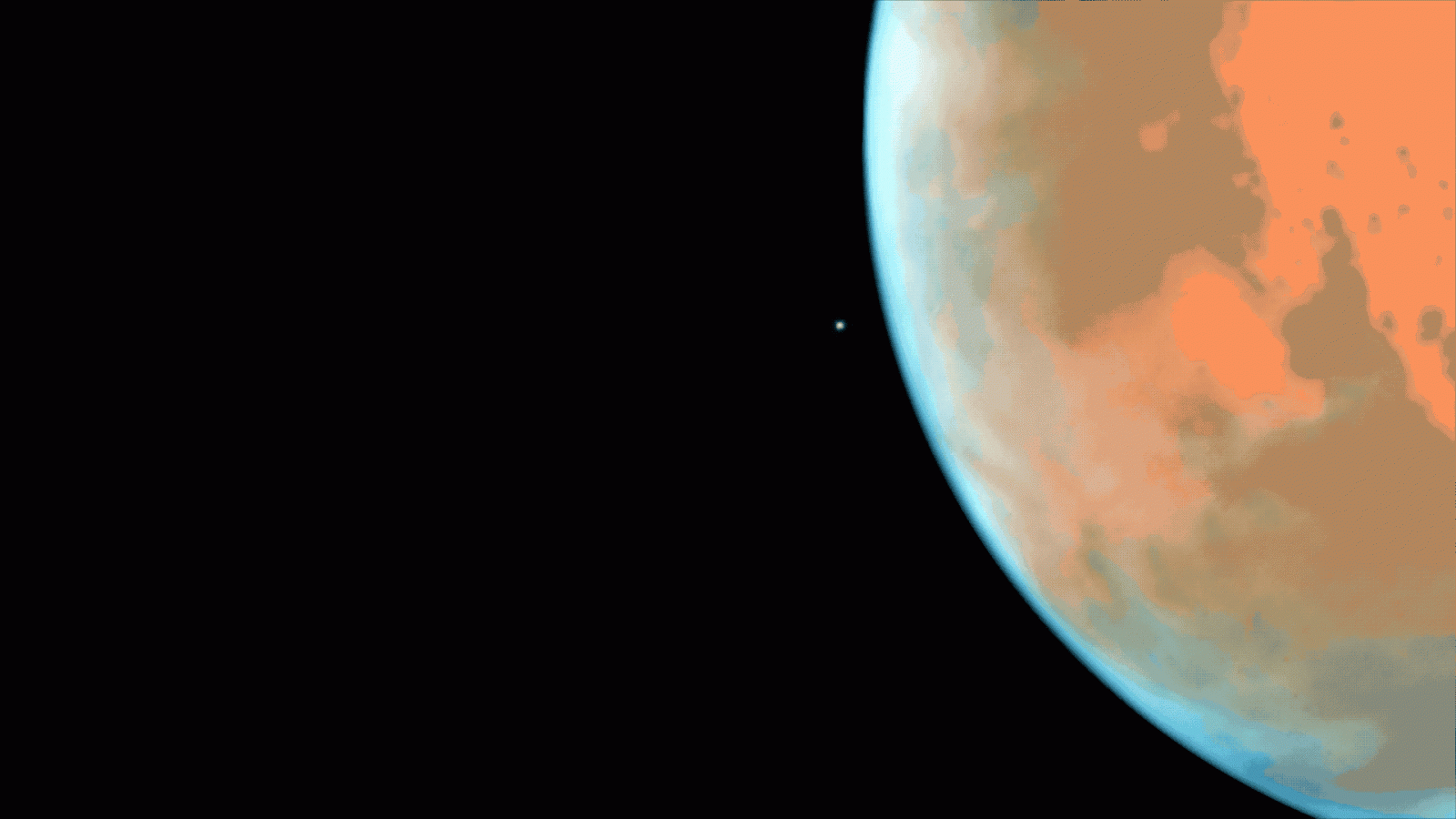Tiny moon Phobos photobombs Mars in Hubble Telescope picture
Phobos is one of the tiniest moons in the whole solar system.
Appearing as a small white dot that looks almost more like a distant star, the moon Phobos has been unexpectedly spotted orbiting the Red Planet.
Mars actually has two moons, Phobos and Deimos. They are rarely imaged in detail as they are so small. Phobos – one of the smallest moons in the solar system – has now been seen in a rare picture captured by Nasa's Hubble Telescope.
Although tiny, the name Phobos comes from the Greek for 'fear'. The name of its partner Deimos is 'terror'. Phobos and Deimos were the sons of the Greek god of war, Ares. The two moons were discovered in 1877 by American astronomer Asaph Hall.
Far from being fearsome, Phobos is just 16.5 miles long, 13.5 miles wide and 11 miles deep – small enough to fit inside a large city's ring-road. As well as having a very irregular shape, its surface is deeply pitted with impact craters from collisions with other space objects.
It takes just 7 hours and 39 minutes to make a full circuit of the planet – faster than a Martian day, which lasts a little longer than a day on Earth, at 24 hours and 37 minutes. This short orbital time makes it unique among the moons of the solar system.
Another peculiar feature of Phobos is its distance from Mars. The moon sticks closer to its parent planet than any other moon in the solar system. From Phobos, Mars could be seen to dominate a quarter of the sky.
The origin of Phobos and its partner Deimos are still hotly debated among astrophysicists. They seem to be made of the same stuff as asteroids. Given they also have a very irregular shape, many suppose that they are in fact stray asteroids from the nearby belt between Mars and Jupiter.
Another possibility is that Phobos was flung out from Mars when a large object collided with the planet, sending debris out into space. This rubble could have gradually collected to form the satellite, bound together by a thin crust.

© Copyright IBTimes 2025. All rights reserved.





















